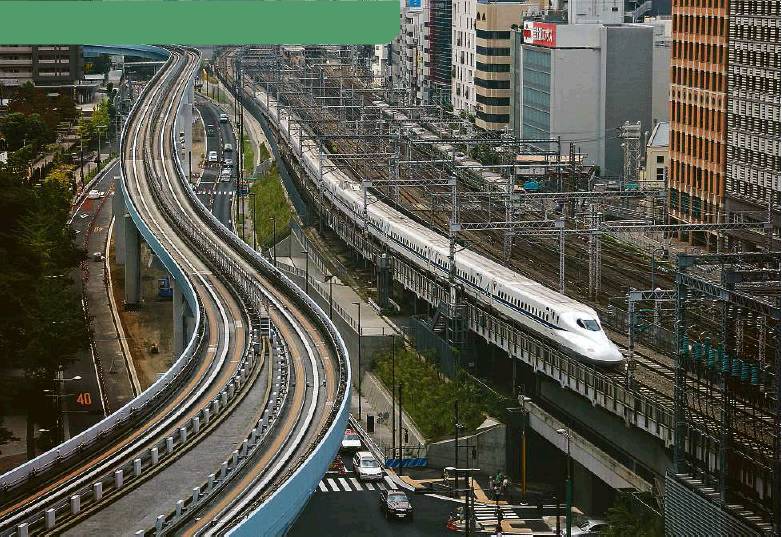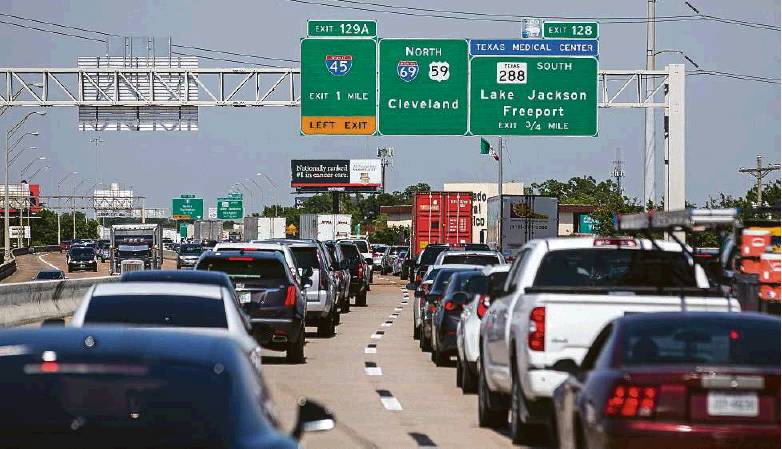TOMLINSON’S TAKE
Trains and rail make more sense than cars and roads
CHRIS TOMLINSON Commentary
International travel always makes me think about the choices we’ve made in America, and spending time in Japan made me think about which forms of transportation our government subsidizes and to what end.
Comparing Japan’s emphasis on shared, electric railroads to America’s focus on personal, fossil fuel vehicles is especially relevant as the world confronts climate change.
After World War II, U.S. and Japanese leaders chose different infrastructure strategies that reflected domestic realities. Japan, which imports all fossil fuels, decided to build a train and subway network complemented by roads. The U.S., on the other hand, was the largest oil producer in the world and replaced passenger trains and trolleys with a vast highway network.
Both governments spent trillions in taxpayer dollars to build new systems. One strategy, though, has paid off while the other is reaching a dead end.
My vacation involved traveling in Tokyo, visiting the former capital of Kyoto and exploring islands in the Seto Sea, about 340 miles southwest of Tokyo.
The Japanese capital is served by 189 miles of track connecting 285 stations along 13 subway lines. Public buses crisscross the city, and every corner is reachable with convenient public transportation.
Bullet trains connect major cities, with at least one leaving every hour for Osaka and Kyoto. Traveling at more than 150 mph, these trains are far more convenient than driving a car. Regional trains connect almost every village, and a sophisticated ferry network connects the islands of the Seto Sea.
The Japanese government decided after World War II to discourage individuals from using personal vehicles. Express highways charge tolls as high as $70 to drive 200 miles at a speed limit of 62 mph. Fuel is heavily taxed, and the revenue is spent to subsidize fast and efficient rail networks.
The United States built the interstate highway system, and state and local leaders shut down passenger trains and trolleys to make room for six-lane arterial roads. Texas was the world’s largest oil producer in the 1950s, and to encourage the industry, governments laid down roads and lightly taxed fuel.
American cities slashed public transportation systems into a sorry state. I made the six-mile trip from my home near downtown Houston to the Chronicle building by bus only once because it took 90 minutes. A German exchange journalist recently wrote a worthwhile essay for the Chronicle on the impossibility of relying on Houston’s bus and rail system, which I am sad to report is typical of most American cities.
Decades later, both the American and Japanese systems have reached maturity, with one more sustainable and scalable than the other.
As Japan’s population grew, rail and subway companies have extended routes and added frequency. Subways run every five minutes; intercity trains run as often as every 15. Adding capacity is as simple as adding more rolling stock.
America’s freeways fill up as quickly as governments can add lanes. San Antonio commuters spend 51 hours a year stuck in traffic, while Houston drivers spend 75, according to the Urban Mobility Report from Texas A&M University. Despite billions spent on expanding freeways, these numbers rarely improve and never for very long.
Elected officials are still trying to build their way out of one of the biggest frustrations of city life by pouring more concrete. Harris County officials recently committed $100 million to expand I-45 near downtown Houston over the objections of environmentalists and neighborhood activists.
Critics of public transportation blast what they consider a waste of taxpayer money on passenger rail and bus lanes, but building wider highways makes little economic sense. And climate change demands that we find alternatives to personal cars and trucks, not make them easier to use.
Thanks to natural gas and renewable electricity sources, transportation fuels have replaced electricity generation as the largest source of carbon dioxide in the U.S. We must cut back on the amount of gasoline and diesel we burn if we want to slow the planet’s warming.
Capturing pollution is also simpler from a single power plant than from 300 million tailpipes. Taking cars off the road and replacing them with electric trains and buses is the only solution.
Fossil fuel companies, though, fight these kinds of projects. They know that people commuting alone in SUVs creates demand for their product. They recognize that taxpayer-financed highways are the most significant subsidy their industry receives.
Policy choices can have long-term effects on society, and in America, it created acar culture. Every time I see old trolley rails embedded in the street, I wonder how America might have looked if we had chosen Japan’s strategy.
Tomlinson writes commentary about business, economics and policy. twitter.com/cltomlinsonchris.tomlinson @chron.com
Climate change demands that we find alternatives to personal cars and trucks, not make them easier to use.


